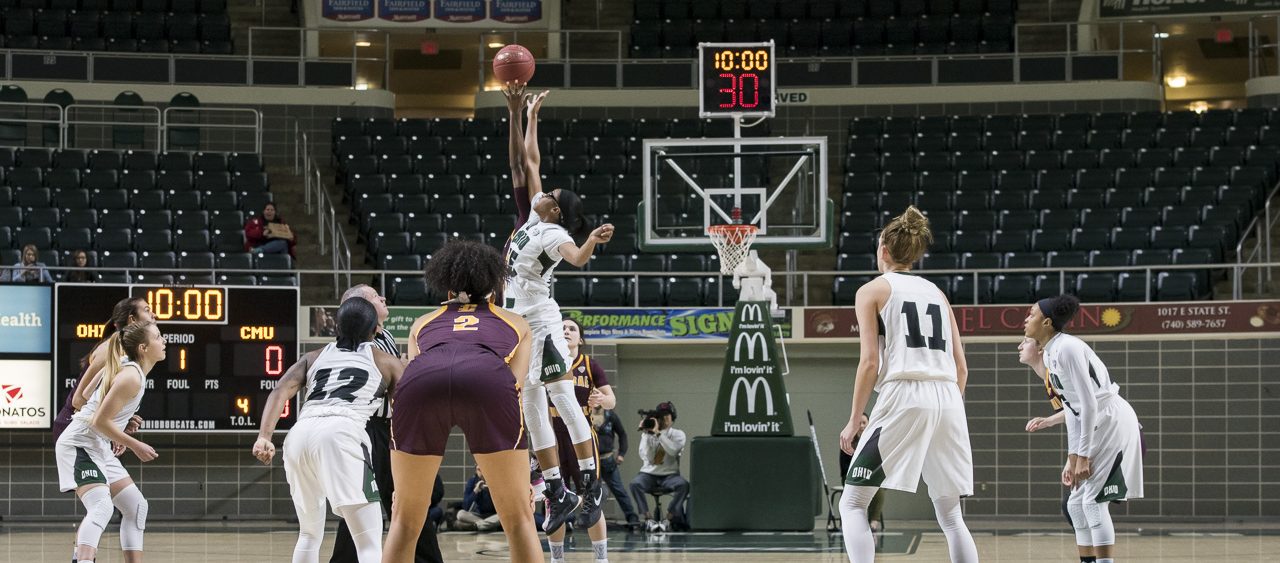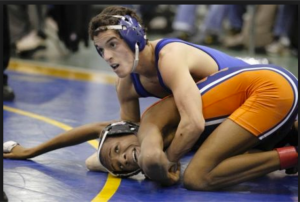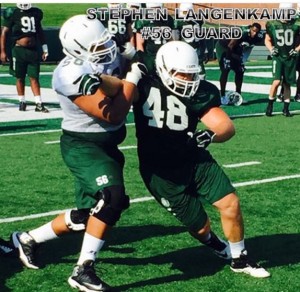
The Challenges of a Medically Disqualified Athlete
By: Shelby Dermer
Posted on:
Playing sports at the next level, high school to college or college to pro, is something many kids dream of. Only a few, though, actually get the chance. It takes hard work and dedication in athletics to take the next step and some athletes sacrifice everything they have in order to get there.
Perseverance pays off for some high school athletes in the form of an athletic scholarship to play at the college level. With the price of tuition rising across the country, a scholarship could be the only way some Southeast Ohio kids can attend college.
No matter how they got there, student-athletes arrive on campus optimistic about a four-year journey that will propel their skills to reach a dream.
But what happens when that dream is shattered?
That is the case for medically disqualified athletes who must deal with not only physical injury, but also the harsh reality that their playing days have come to a screeching halt.
John Bowman, Ohio University’s Assistant Athletic Director for Sports Medicine since 1997, defines a medical DQ as “when the team physician stipulates that the athlete should not or cannot continue to participate for various medical reasons.”
The NCAA handbook states that these reasons can include, “an injury, an illness, or pregnancy.”
How it happens
The hunger for collegiate programs to win on the gridiron comes with a cost. Even some of the most physically-gifted athletes have a tough time with the vigorous routine that goes into competing at the collegiate level.
“The off-season programs are year-round for about four or five of our teams,” Bowman said, “Basketball gets a month and a half off in a twelve-month calendar year, football will get two weeks after the bowl game off, they’ll come back and go right back into the weight room and start lifting again.”
One can see how hectic of a schedule it truly is, especially for the high-contact sports like football, soccer, and wrestling. In a five-year study from 2009 to 2014, the NCAA found that football and wrestling yielded the first and second most total injuries in men’s sports, while soccer had the highest competition injury rate among all women’s sports. Baseball, a low-contact sport, accounts for a low number of injuries, with only 25 percent severe enough to keep an athlete off the field for 10 or more days.
| Sport | Estimated Injury Rate (per 1,000 athletic exposures) |
| Men’s Wrestling | 13.1 |
| Women’s Gymnastics | 10.4 |
| Men’s Ice Hockey | 9.5 |
| Football | 9.2 |
| Men’s Basketball | 8.5 |
| Women’s Soccer | 8.4 |
| Men’s Soccer | 8.0 |
(Source – NCAA)
Stephen Langenkamp, an offensive lineman for Ohio, knows all too well what can happen any time an athlete takes the field in a contact sport. During one of his first practices, he suffered a shoulder injury that would sideline him indefinitely.
“I was getting playing time and I was being used a lot in practice,” Langenkamp recalls, “I hit someone with my arm and grabbed them. They went right and I felt a huge tear in my shoulder.”
After a month of rehab, Langenkamp suited up once again, only to suffer the same injury to the same shoulder. A scope of his arm revealed a 360-degree torn labrum, ending his season.
Langenkamp had surgery and worked hard to make it back for his sophomore season, fueled by the will to do anything to get back on the field.
“I told them (coaches) I was 100 percent but I really felt like 70,” Langenkamp said.
Seven practices into his second year, the constant pain was too much. After seeing a shoulder specialist who told him his labrum was still torn, Langenkamp went under the knife for a second time before his 20th birthday. When the shoulder never fully recovered, Langenkamp was medically disqualified. Langenkamp said that saved him “a guaranteed shoulder replacement by 40.”
At least Langenkamp got to represent his school. That’s something wrestler Sebastian Pique never got to experience. The reason wrestling is at the top of the chart for injury rates is because there’s no difference in the physical demands between practices and meets.

Pique was an all-state wrestler at a small high school just a stone’s throw from Chicago. He needed a pair of surgeries to repair his torn labrum before he ever packed his bags for southeast Ohio.
Rehab stints went well for Pique, and he was set to make his collegiate debut for the Bobcats in front of the hometown fans at the Convocation Center.
That moment never came.
“I was warming up and tore it again. That was pretty much it,” Pique said, “I knew they were gonna stop me.”
Dealing with disappointment
Being shut down is something an athlete never thinks will happen to them. When they arrive on campus, it’s a new chapter, but unfortunately, a chapter that ends too early for some.
As expected, this leaves quite the burden on a student-athlete. Young adults who’ve been committed to a sport for more than a decade now have to figure out who they are without it. It’s a situation that can lead to mental health challenges.
Destinee Cooper has been in and out of the Convo for four years. But due to injuries on both of her knees, she’s spent the last three years as more of an equipment manager, preparing the team’s uniforms and filling up water bottles at practice. The last time she wore a green and white jersey was in March 2014, before she ended a 13-year playing career.
“At first it was really hard. Cause to actually think about the fact that I’m done. I can’t go back out there,” Cooper said. “When you get hurt, you work your way back out there. But that’s not me.”
But Cooper likes to look at the decision as a positive; it was not worth taking the risk that continuing to play would impact her life after basketball.
“Doctors tell me I have 60-year-old knees. I didn’t wanna leave school and have to live my life so limited because of basketball,” Cooper said, “it’s important to me, but the rest of my life is more important.”
Dr. Frederick Soliman, a team physician for Ohio University since 2015, has to make the tough decision to medically disqualify an athlete, a task not easy to check off a daily to-do list.
“It’s not an easy conversation. It’s tough on me ending someone’s dream,” Soliman says, “I try to let them see the big picture.”
Seeing the big picture is very difficult for an athlete who has shaped their entire life around athletics. But as Soliman explains, “it’s not just the physical well-being, it’s the mental well-being you have to worry about just as much because you strip an athlete of their identity, and then people can struggle.”
Looking down the road

Stephen Langenkamp will never buckle his chinstrap and clash with defenders again, but his time on the sidelines guided him towards a new career path. “What opened up my future was watching football from the third-person perspective and then I was like, ‘wow I think might wanna get into coaching’ so now I’m actually pursuing things to become a football coach.”
Trading athletic attire for a clipboard and a whistle is a common approach. Jenna Curry, an ex-Bobcat who endured three different ACL tears during her basketball career, started a non-profit AAU organization called ‘WV Team Infinity’ after leaving Ohio University and now serves as head coach for two teams.
Cooper, meanwhile, admits she’s still figuring out what her dreams will be, but she’s made a start. She’s turned her focus towards her Psychology degree, where she can “help young kids and keep them out of the streets. That would be my dream, to be out there and helping the youth in any way I can.”
Asked if she had any advice for a medically disqualified athlete, Cooper offered some motivating words to anyone going through the struggle of giving up a sport for good.
“It’s only a temporary pain. It’s not everything, even though it seems like it’s your whole world at the time. There’s more to your life than just the sport itself. You have the rest of your life to think about.”

